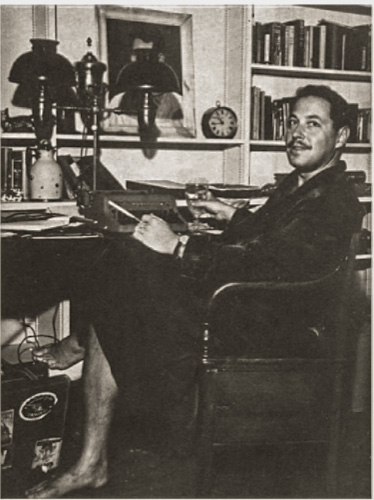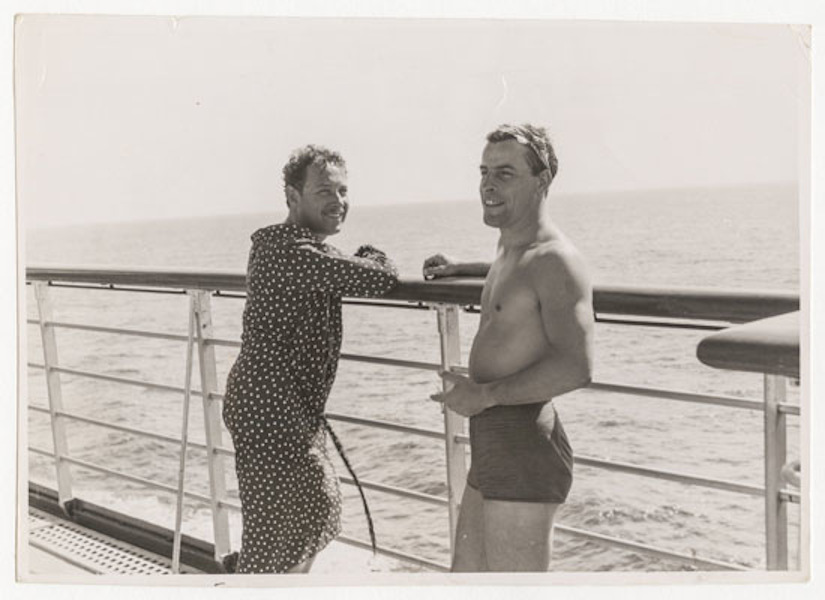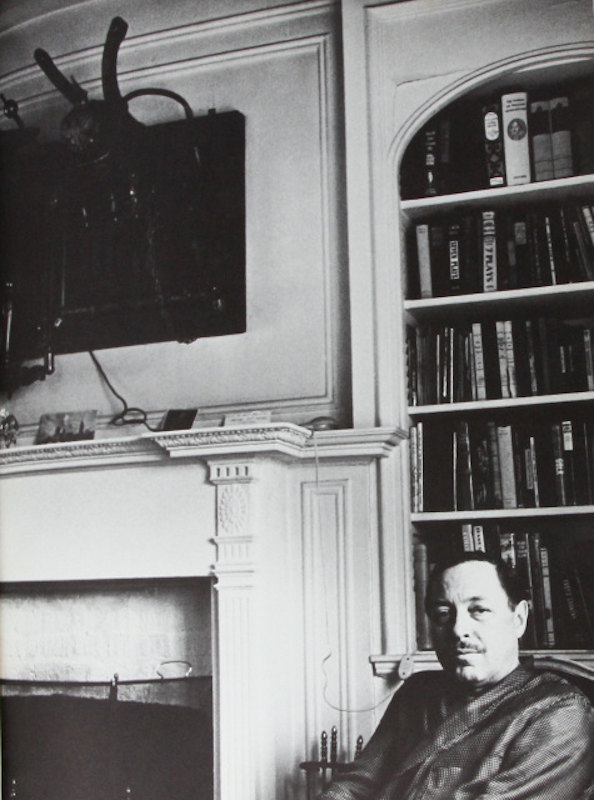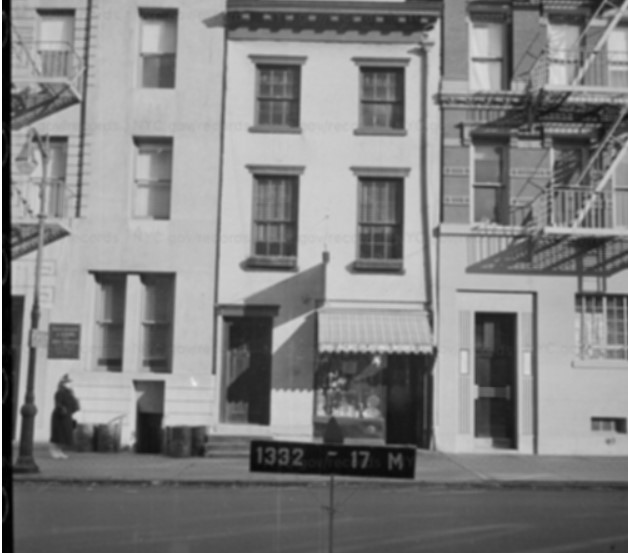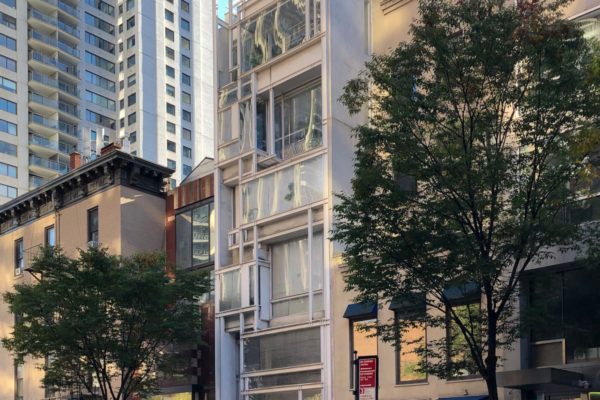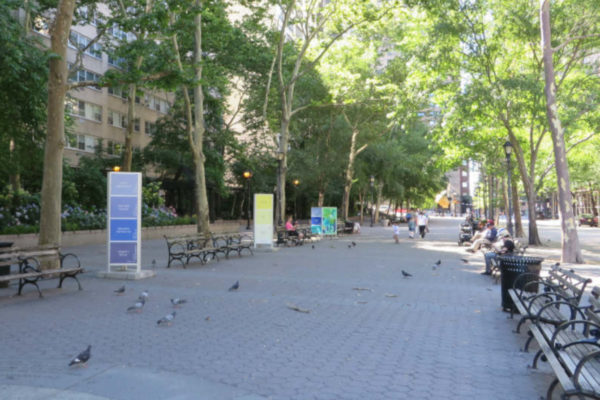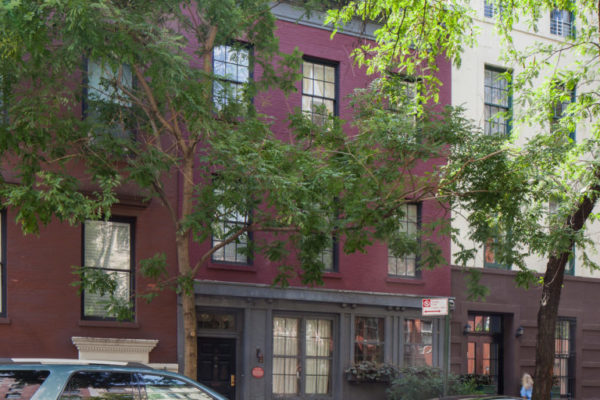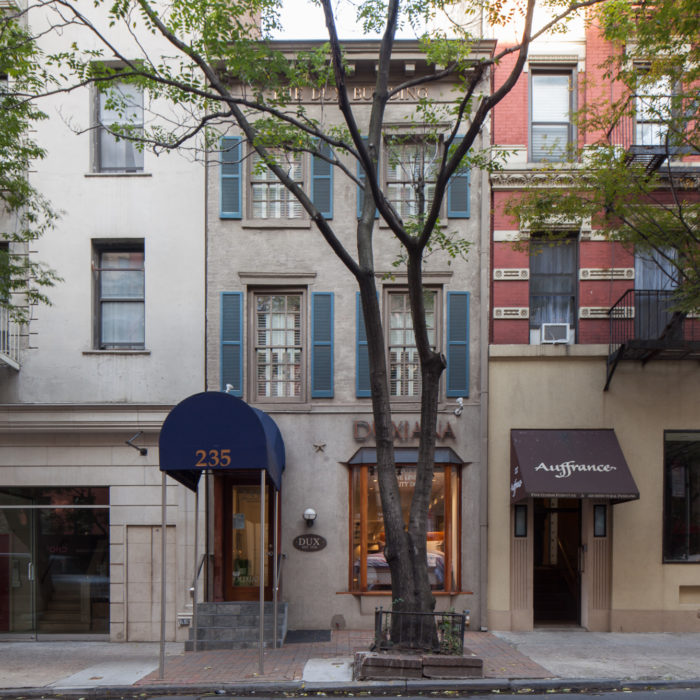
Buffie Johnson Residence / Tennessee Williams Residence
overview
From 1942 to 1950, painter Buffie Johnson lived in this building, purchasing it in 1943. Johnson was a prominent figure in the post-World War II art scene and socialized with many of the era’s most notable artists and writers.
She leased the first floor to Pulitzer Prize-winning playwright Tennessee Williams, who lived here with his long-term partner Frank Merlo in 1948 and 1950-51.
On the Map
VIEW The Full MapHistory
Buffie Johnson Residence
The New York City-born artist Buffie Johnson (1912-2006) was a notable 20th century painter whose career spanned over seven decades. She worked in a variety of styles ranging from Surrealism to Abstract Expressionism and Realism. A feminist, Johnson studied symbolism and mythology with the designer-symbologist Natacha Rambova in the 1940s and began collecting images of the Great Mother, which inspired her art and ultimately resulted in her 1988 book, Lady of the Beasts: The Goddess and Her Sacred Animals.
Johnson had her first solo exhibit in New York in 1939. In 1943, she was included in the Exhibition by 31 Women at Peggy Guggenheim’s Art of This Century gallery (30 West 57th Street), the first large commercial show devoted exclusively to the work of women. In the post-war years, she showed in several European galleries and in 1950 she joined the Betty Parsons Gallery at 15 East 57th Street (demolished), run by Betty Parsons, an influential art collector and painter who was an early promoter of Abstract Expressionism. Johnson’s paintings are now in the collections of several major museums, including the Guggenheim, Whitney, and the Smithsonian American Art Museum.
By the summer of 1942, Johnson moved to the narrow building at 235 East 58th Street, which she purchased in November 1943. In 1947, she worked with her friend, architect Tony Smith, to remodel the ground floor behind the storefront, which stretched to the rear of the lot.
Johnson befriended many notable artists and writers, including many who were LGBT, such as Parsons and her lover, arts journalist Rosalind Constable, Jane Bowles and Paul Bowles, Truman Capote, Gore Vidal, Virgil Thomson, Donald Wyndham, John La Touche, and Ruth Bernhard (who took several nude photos of Johnson in the early 1940s). One of Johnson’s best known paintings is a 1947 portrait of her friend, playwright Tennessee Williams.
According to author Phyllis Chesler, who got to know Johnson as part of the Village feminist scene in the 1970s, Johnson “had husbands and a long line of male as well as female paramours.” They included writer Patricia Highsmith, whose diaries recount their on-again, off-again, non-exclusive affair, which lasted from July 1941 until the first months of 1943. They remained in contact until at least 1988, when Highsmith visited Johnson in Tangiers, where Johnson was leasing Jane Bowles’ former apartment. On separate occasions, Johnson told writers Sarah Schulman and Lynne Tillman about a brief affair she had with Jane Bowles in the 1940s, explaining to Tillman that Bowles had dropped her because Bowles preferred older women, and they were the same age.
Johnson’s first marriage in September 1942 to writer John “Jack” Latham, a corporal in the army, then stationed in California, lasted only a short time. From 1950 to 1973, she was married to the art critic and writer Gerald Sykes. In 1950, Johnson and Sykes moved to East Hampton while she retained ownership of the 58th Street property until 1970.
Tennessee Williams Residence
In 1948 and again in late 1950-51, Johnson rented the 58th Street apartment to Tennessee Williams (1911-1983). While living there, he established a relationship with Frank Merlo, who moved in with him. (In The Selected Letters of Tennessee Williams, Volume II, a September/October 1950 letter written by Williams notes that his grandfather likened the interior of the 58th Street apartment to a “Curiosity Shop.”) Their time here appears to have been brief; on the second occasion, Williams was in the city for the production of his play The Rose Tattoo (1950), which had its Broadway premiere at the Martin Beck Theater in 1951 and for which he won the Tony Award for Best Play. He dedicated the play to Merlo.
Williams is considered one of the foremost playwrights of the 20th century. He was best known for works such as The Glass Menagerie (1944), A Streetcar Named Desire (1947), and Cat on a Hot Tin Roof (1958), the latter two of which earned him Pulitzer Prizes. Many of Williams’ plays were performed in Broadway theaters with LGBT creators, set designers, and actors. Williams and Merlo were together 14 years, until Merlo’s death in 1963.
In his memoir, Williams described the 58th Street apartment as “the loveliest of the three or four apartments I’ve occupied over the years in New York City.” He noted it was “freshly painted white and gray” and that the “apartment had a huge workroom in the middle, the height of two stories. Back of that great studio was a little patio full of exotic plants watered by a small fountain. It was kept at a low temperature so that the glass walls which enclosed it were always frosted over: it looked, from the studio and bedroom beyond it, like a small submarine garden. As for the bedroom, it was a piece of enchantment. Buffie’s sign was Aquarius and the bedroom was full of water things. An illuminated aquarium, a great assortment of sea shells, and driftwood and old fishing-nets. The bed was huge, and marvelously comfortable–perfectly designed for the activities that it was soon to support…”
Entry by Amanda Davis, project manager, and Sarah Sargent, project consultant (November 2019; last revised January 2021).
NOTE: Names above in bold indicate LGBT people.
Building Information
- Architect or Builder: unknown
- Year Built: at some point between 1867 and 1892
Sources
“A Painter Remodels a Ground Floor,” Harper’s Bazaar, Vol. 82, Iss. 2836, April 1948, 152-153.
Albert J. Devlin, ed., The Selected Letters of Tennessee Williams, Volume II (New York: New Directions Publishing, 2004), 350-351.
Alexandra de Lallier, “Buffie Johnson: Icons and Altarpieces to the Goddess,” Women’s Art Journal, Vol. 3, No. 1 (Spring/Summer 1982), 29-34.
Anna von Planta, ed., Patricia Highsmith: Her Diaries and Notebooks: 1941-1995 (New York: W. W. Norton & Company, 2021).
Hilton Als, “The Man who Queered Broadway,” The New Yorker, October 9, 2014, bit.ly/30Jvlez.
John S. Bak, Tennessee Williams: A Literary Life (New York: Palgrave Macmillian, 2013).
“Kiss of Life: Tennessee Williams on a Romantic Reawakening”, The New Yorker, May 28, 2007, bit.ly/2xvmXT3.
Margalit Fox, “Buffie Johnson, Artist and Friend of Artists, Dies at 94”, The New York Times, September 6th, 2006, nyti.ms/329YUHf.
Sarah Schulman, “Making Lesbian History Possible: A Proposal,” OutHistory, June 6, 2016, bit.ly/30goZTm.
Tennessee Williams, Memoirs (New York: Bantam Book, 1976), 190-191.
Tracy Boyd, “The Artist’s Houses: A Brief Remembrance,” Buffie Johnson, 2009, bit.ly/32caTnC.
Do you have more information about this site?
This project is enriched by your participation! Do you have your own images of this site? Or a story to share? Would you like to suggest a different historic site?
